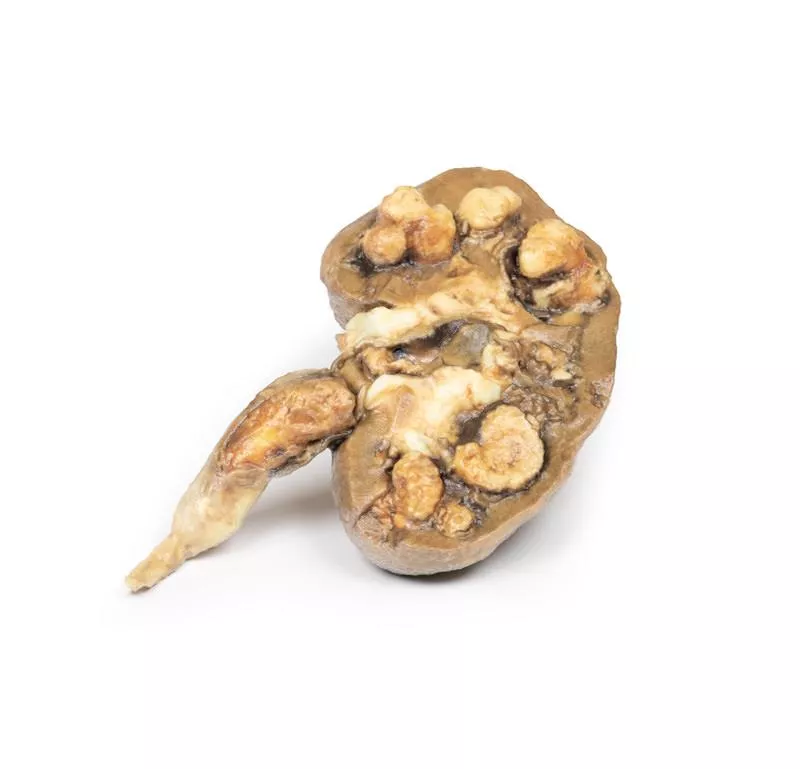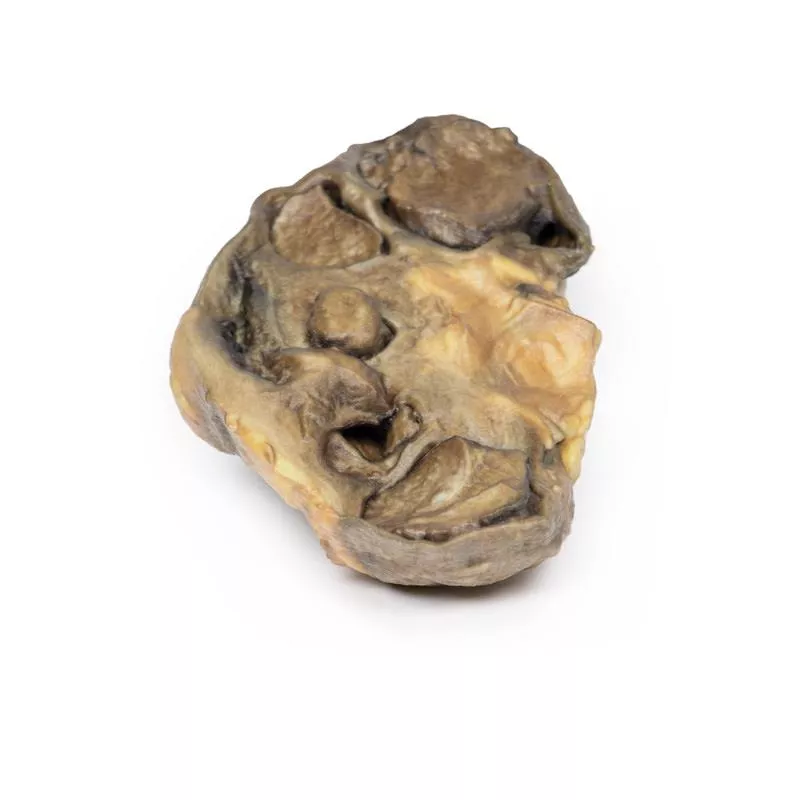Product information "Adrenal haemorrhage / Waterhouse-Friderichsen Syndrome"
Clinical History
A 77-year-old man presented with abdominal and flank pain, fever, and rigors three days in duration. He was two weeks post-operative from duodenal ulcer repair. On admission, he was hypotensive, hyperkalemic, hyponatremic, and had a purpuric rash. Blood cultures grew Escherichia coli. Despite treatment, he rapidly deteriorated and died from septic shock.
Pathology
The kidney and adrenal gland specimen shows extensive haemorrhage within the adrenal medulla, with blood extravasation into the surrounding fat. This is characteristic of adrenal haemorrhage in severe septic shock, known as Waterhouse-Friderichsen syndrome.
Further Information
Waterhouse-Friderichsen syndrome is adrenal haemorrhage caused by overwhelming sepsis, leading to hypotensive shock, disseminated intravascular coagulation (DIC), and adrenal insufficiency. It mainly affects children but can occur in adults. Over 80% of cases are due to Neisseria meningitidis, but other bacteria like Escherichia coli, Streptococcus pneumoniae, and Pseudomonas aeruginosa can also cause it. The haemorrhage likely results from bacterial invasion, DIC, or endothelial damage from toxins. It usually affects both adrenal glands, starting in the medulla and extending outward, leading to adrenal failure. Patients present with rapid septic shock, purpuric rash, and adrenal crisis. Treatment includes supportive care, intravenous antibiotics, and steroids. Mortality exceeds 50%.
A 77-year-old man presented with abdominal and flank pain, fever, and rigors three days in duration. He was two weeks post-operative from duodenal ulcer repair. On admission, he was hypotensive, hyperkalemic, hyponatremic, and had a purpuric rash. Blood cultures grew Escherichia coli. Despite treatment, he rapidly deteriorated and died from septic shock.
Pathology
The kidney and adrenal gland specimen shows extensive haemorrhage within the adrenal medulla, with blood extravasation into the surrounding fat. This is characteristic of adrenal haemorrhage in severe septic shock, known as Waterhouse-Friderichsen syndrome.
Further Information
Waterhouse-Friderichsen syndrome is adrenal haemorrhage caused by overwhelming sepsis, leading to hypotensive shock, disseminated intravascular coagulation (DIC), and adrenal insufficiency. It mainly affects children but can occur in adults. Over 80% of cases are due to Neisseria meningitidis, but other bacteria like Escherichia coli, Streptococcus pneumoniae, and Pseudomonas aeruginosa can also cause it. The haemorrhage likely results from bacterial invasion, DIC, or endothelial damage from toxins. It usually affects both adrenal glands, starting in the medulla and extending outward, leading to adrenal failure. Patients present with rapid septic shock, purpuric rash, and adrenal crisis. Treatment includes supportive care, intravenous antibiotics, and steroids. Mortality exceeds 50%.
Erler-Zimmer
Erler-Zimmer GmbH & Co.KG
Hauptstrasse 27
77886 Lauf
Germany
info@erler-zimmer.de
Achtung! Medizinisches Ausbildungsmaterial, kein Spielzeug. Nicht geeignet für Personen unter 14 Jahren.
Attention! Medical training material, not a toy. Not suitable for persons under 14 years of age.






































